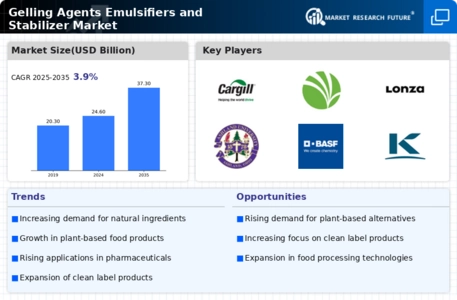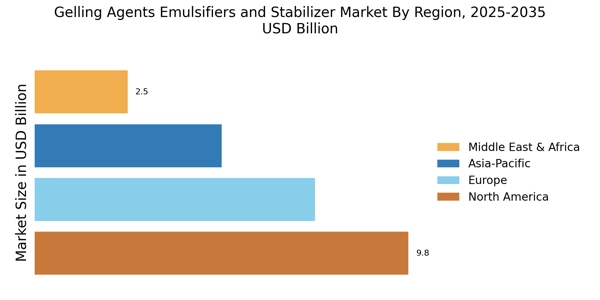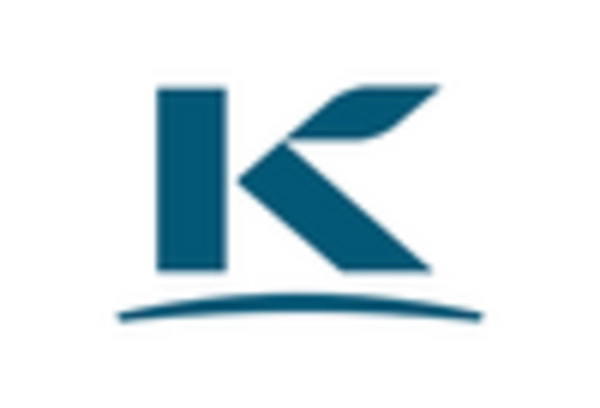Innovations in Food Technology
Innovations in food technology are significantly influencing the Gelling Agents Emulsifiers and Stabilizer Market. Advances in formulation techniques and ingredient functionality are enabling manufacturers to create products that meet evolving consumer preferences. For instance, the development of plant-based emulsifiers and stabilizers is gaining traction, catering to the growing vegan and health-conscious demographic. This shift is supported by market data indicating a surge in plant-based product launches, which are projected to increase by 20% in the coming years. Such innovations not only enhance product appeal but also align with consumer demands for healthier and more sustainable food options.
Rising Demand for Processed Foods
The increasing consumer preference for convenience foods is driving the Gelling Agents Emulsifiers and Stabilizer Market. As lifestyles become busier, the demand for ready-to-eat and processed food products rises. This trend is reflected in market data, which indicates that the processed food sector is projected to grow at a compound annual growth rate of approximately 4.5% over the next few years. Gelling agents, emulsifiers, and stabilizers play a crucial role in enhancing the texture, stability, and shelf life of these products, making them indispensable in food manufacturing. Consequently, manufacturers are increasingly incorporating these ingredients to meet consumer expectations for quality and convenience.
Growth in Dairy and Bakery Sectors
The dairy and bakery sectors are experiencing notable growth, which is positively impacting the Gelling Agents Emulsifiers and Stabilizer Market. With the rising consumption of dairy products and baked goods, there is a heightened need for stabilizers and emulsifiers to maintain product consistency and quality. Market analysis suggests that the dairy segment alone is expected to witness a growth rate of around 3.8% annually. These ingredients are essential for achieving desired textures and preventing separation in products such as yogurt, cream, and various baked items. As these sectors expand, the demand for effective gelling agents and emulsifiers is likely to increase correspondingly.
Regulatory Pressures and Compliance
Regulatory pressures and compliance requirements are becoming more stringent, impacting the Gelling Agents Emulsifiers and Stabilizer Market. Governments and regulatory bodies are increasingly focusing on food safety and labeling standards, which necessitates that manufacturers adhere to specific guidelines. This environment creates both challenges and opportunities for the industry. Companies must invest in research and development to ensure their products meet these regulations while also exploring new formulations that comply with safety standards. Market data suggests that the compliance costs for food manufacturers are rising, which may lead to increased prices for gelling agents and stabilizers as companies seek to maintain quality and safety in their offerings.
Increased Focus on Clean Label Products
The trend towards clean label products is reshaping the Gelling Agents Emulsifiers and Stabilizer Market. Consumers are increasingly seeking transparency in food ingredients, prompting manufacturers to reformulate products with fewer artificial additives. This shift is reflected in Market Research Future, which shows that nearly 60% of consumers prefer products with recognizable ingredients. As a result, there is a growing demand for natural gelling agents and stabilizers that can deliver the desired functionality without compromising on label integrity. This trend is likely to drive innovation and reformulation efforts within the industry, as companies strive to meet consumer expectations for clean label offerings.


















Leave a Comment